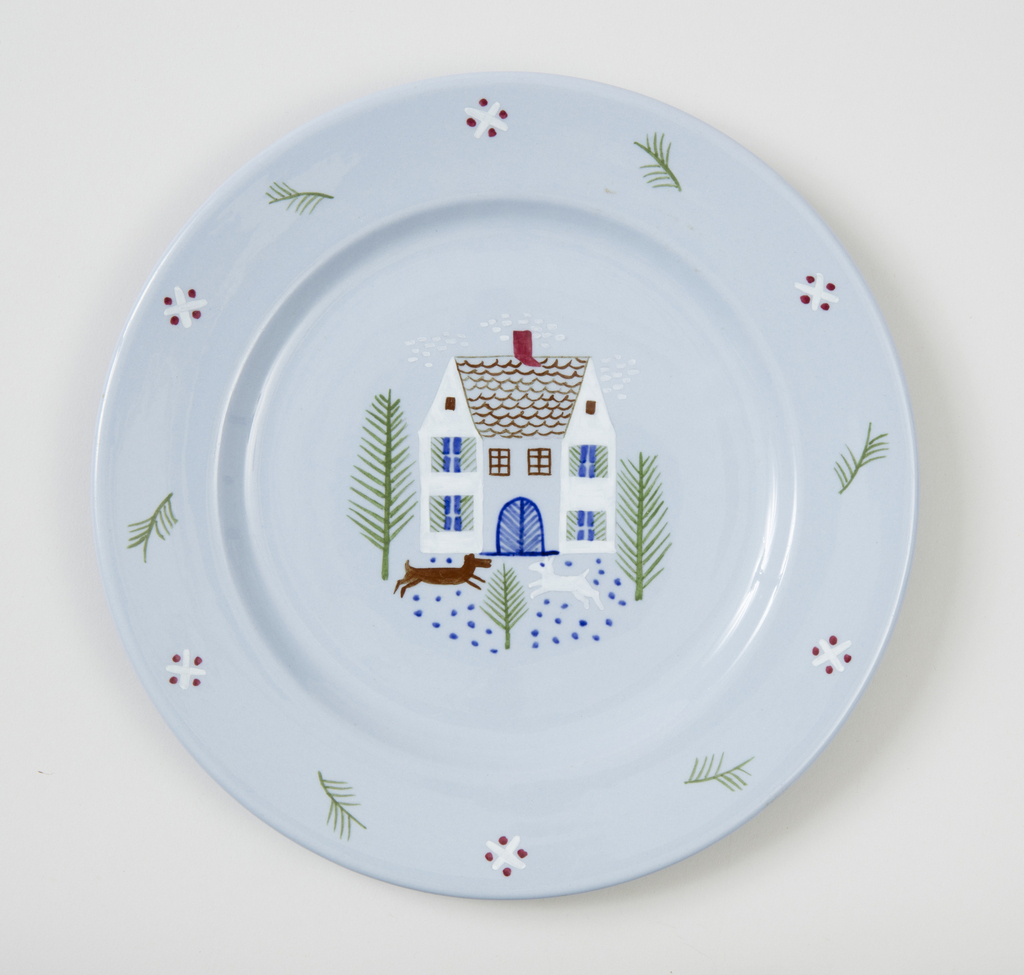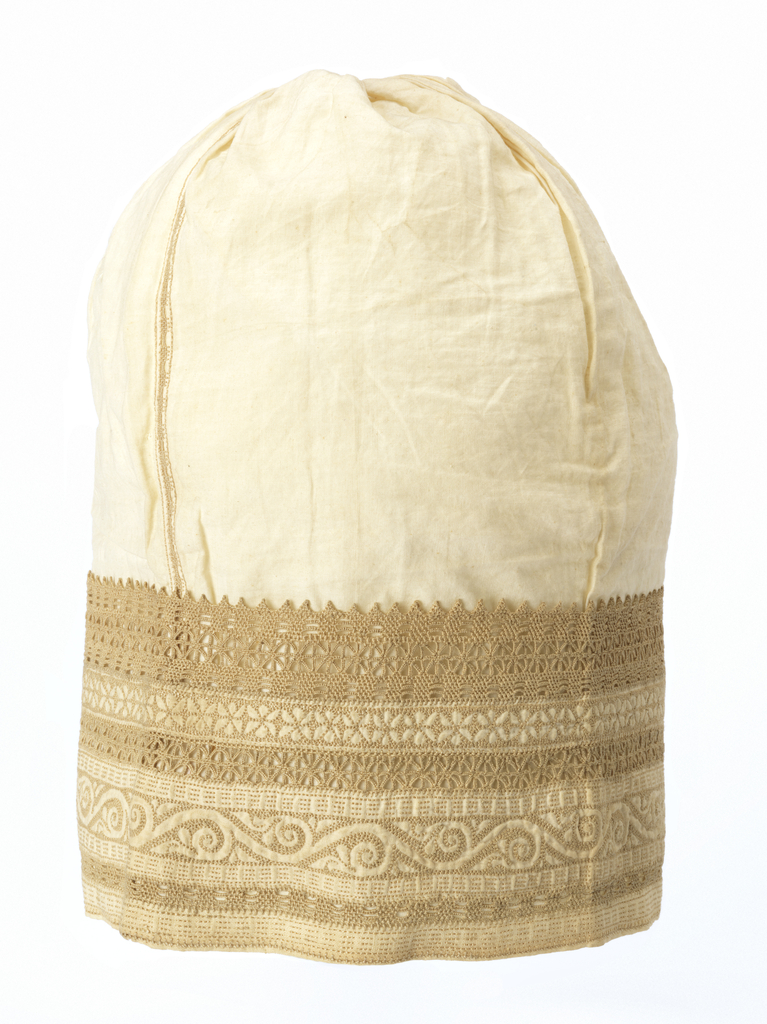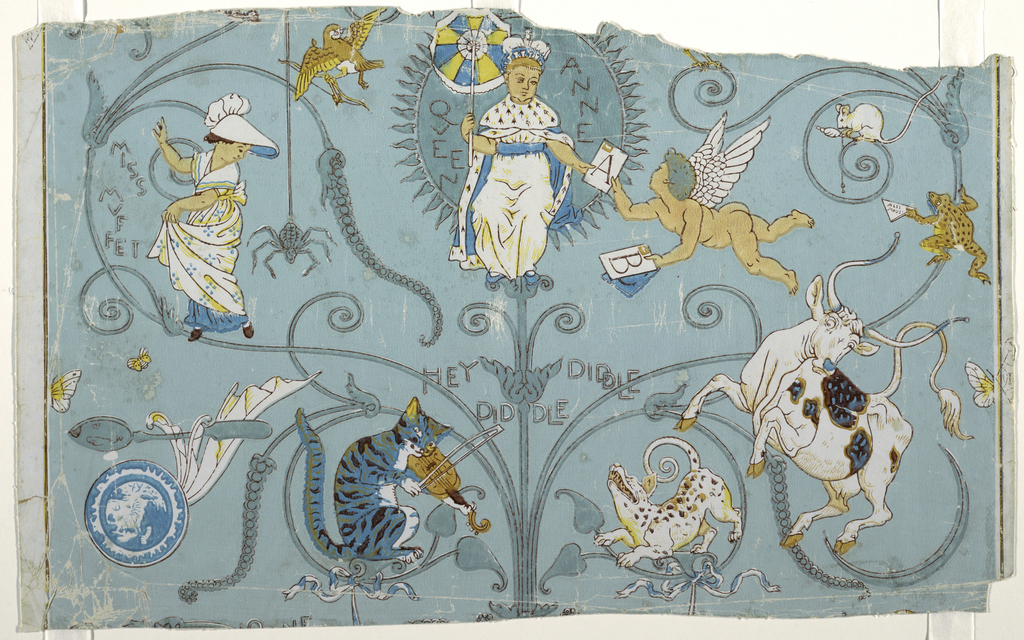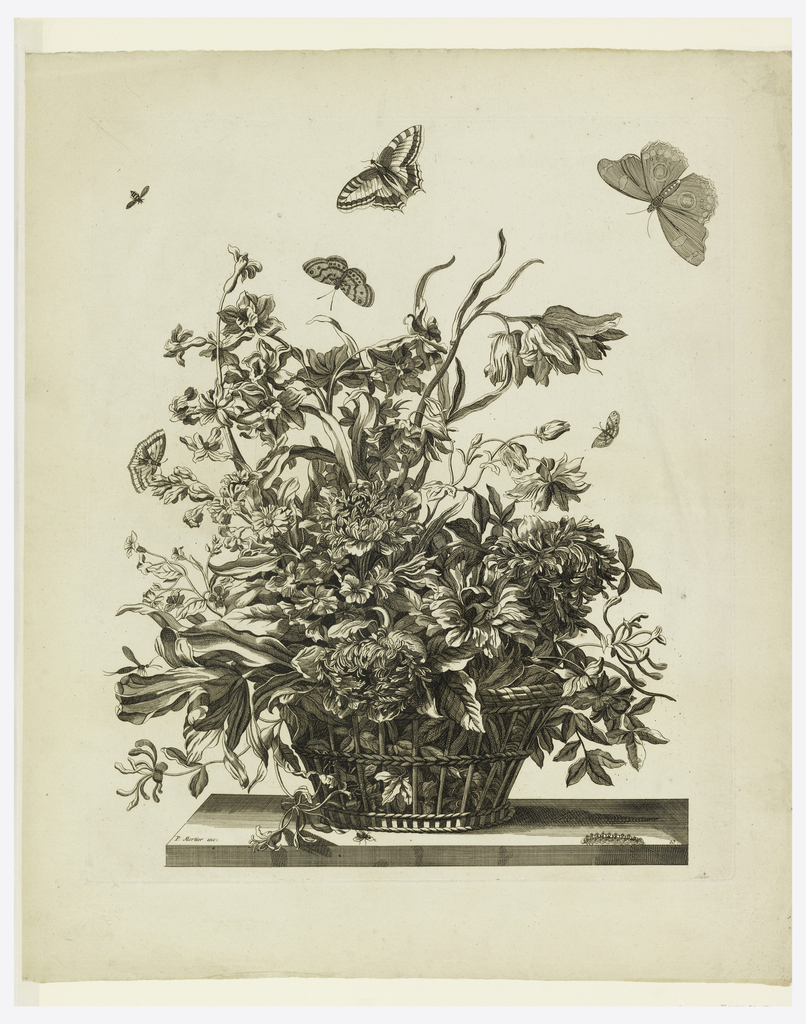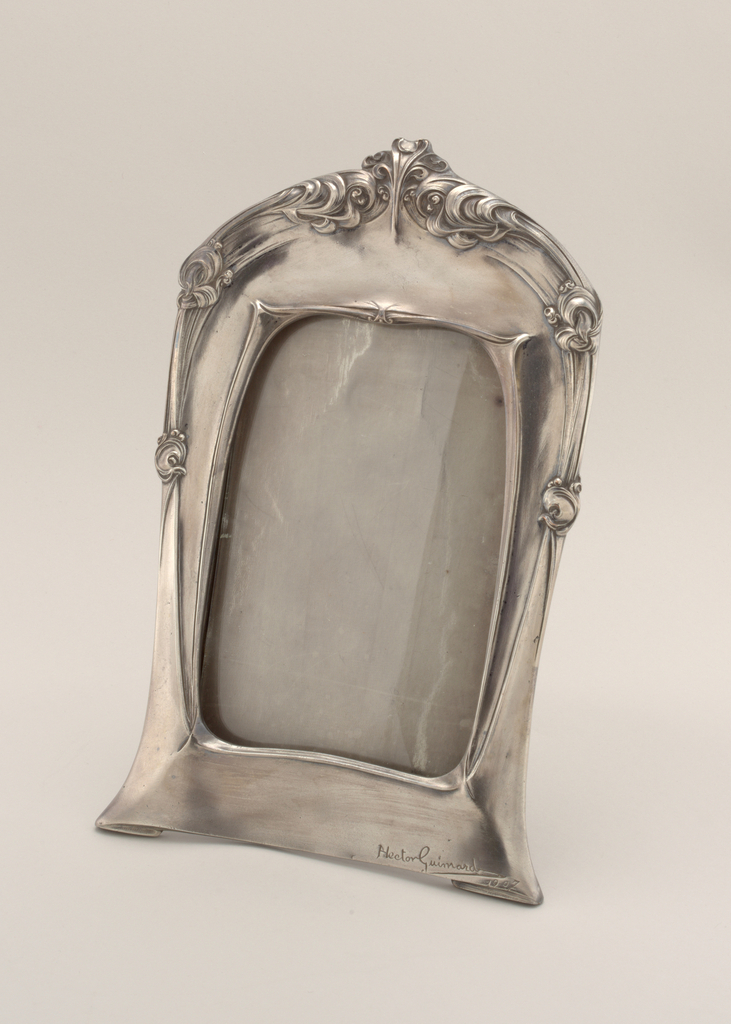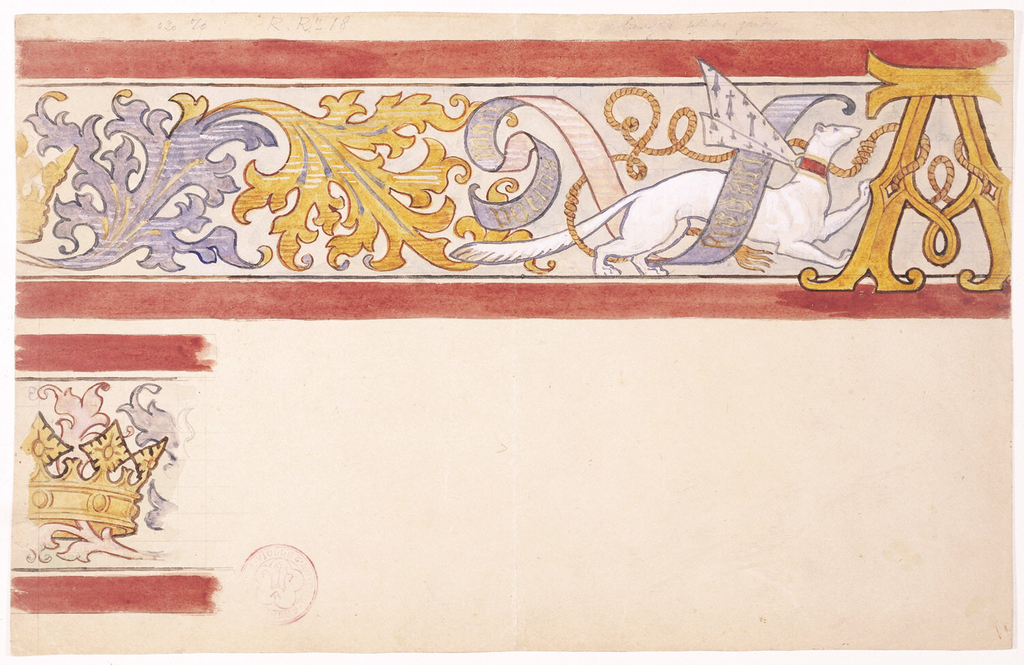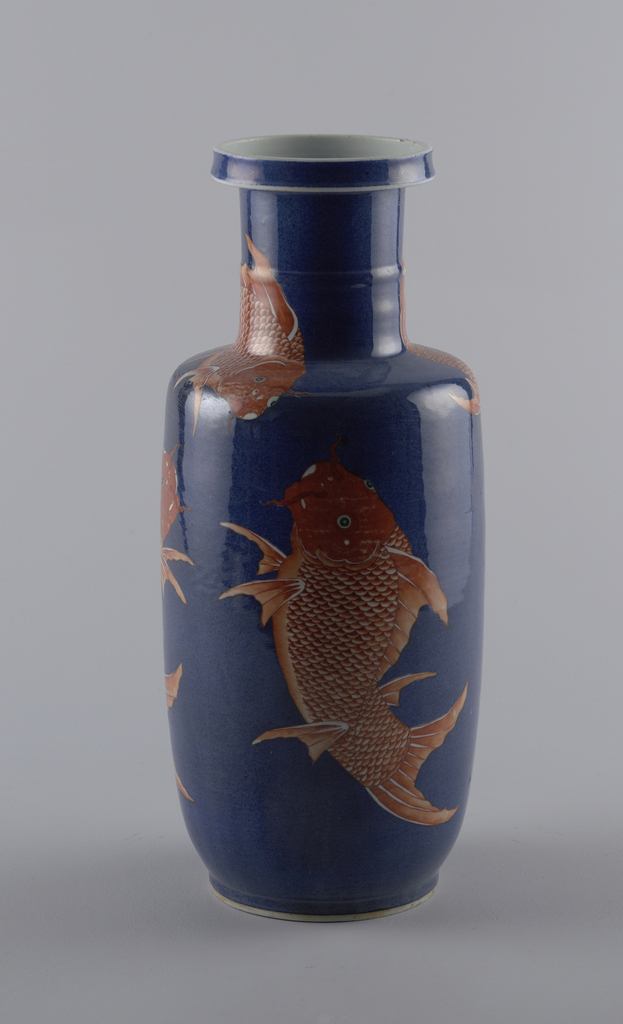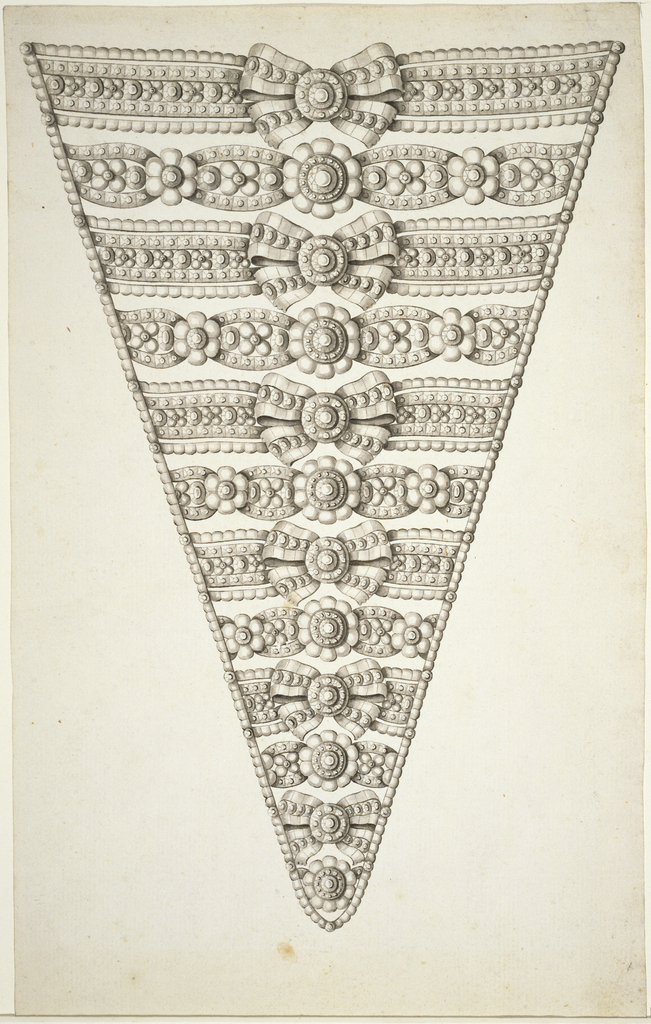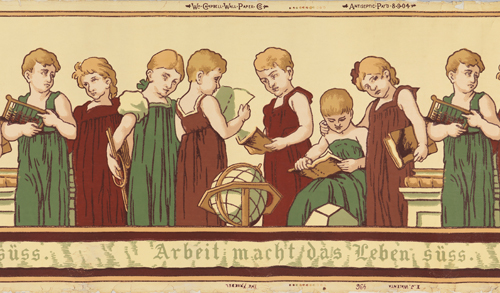Ilonka Karasz decorated this Buffalo China plate in about 1935, during the time that she worked as a designer for the company.[1] Founded by The Larkin Company, a soap factory, in 1901, Buffalo China produced soap dishes and other ceramics that were offered as premiums for purchasers of soap. The Larkin Company’s desirable premiums (including...
Examples of Chinese Ornament Selected from Objects in the South Kensington Museum and Other Collections (figure 1) was written by Owen Jones (1809-1874), one of the most influential English architects, designers, and design theorists of the nineteenth century. Jones selected 100 full-color plates sourced from the motifs of Chinese ceramics, cloisonné works, and carpet designs,...
The decoration on this cap, found only on the lower edge and the single seam, accents its simple design. Wigs were commonly worn in public in the seventeenth century, and many men had shaved heads. When the wig was removed, nightcaps were worn to protect the head from drafty interiors, even during the day. They...
As one of the best-known British decorative artists of the Arts and Crafts Movement, Walter Crane’s design touched upon the fields of books, textiles, wallpaper, stained glass, and ceramics. Children’s education played a considerably important part in the subject matter of Crane’s book illustration and wallpaper designs. In 1875, Crane (1845-1915) was commissioned by Jeffrey...
Jean-Baptiste Monnoyer (French, 1626-1699 ), a painter, designer and engraver, created many prints like this work, Plate 10 from Set of Flowers in a Basket which is dated to 1680. Early flower prints were primarily used for botanical textbooks, but by the end of the seventeenth century, they were considered a higher artistic medium. Prints like...
Architect-designer Hector Guimard earned recognition for his architectural optimism but garnered additional acclaim for his designs intended to occupy the spaces that he created. Working during the end of the nineteenth and early twenteieth centuries in the organic language of Art Nouveau, Guimard approached his designs as part of a larger artistic whole, a Gesamtkunstwerk,...
French architect and theorist Viollet-le-Duc (1814-1879) spent more than half of his career restoring Gothic-era castles, cathedrals, and public buildings, including such notable projects as Notre Dame de Paris and the city walls of Carcassonne. Yet he’s often seen as a pre-modernist, influencing Henry van de Velde and even Frank Lloyd Wright. Viollet-le-Duc’s theories of...
After nearly sixty years of inactivity, the kilns at Jingdezhen were restored by the Kangxi emperor around 1680. Considered to be one of the greatest Chinese emperors for the progress in the natural sciences and the arts China made under his rule, the Kangxi emperor reigned from 1662 to 1722. During this time, the Jingdezhen...
When the Hewitt sisters founded the Cooper Union Museum in 1897, they sought to provide a rich visual resource for students who were destined to become architects and designers. As they assembled the works of art and design that would enter the museum’s collection, the sisters recognized that drawings offered unique opportunities to learn how...
The early years of the twentieth century were the high point in children’s room decoration. The Industrial Revolution brought about increased wealth, and children were given their own rooms for the first time. The decoration of a child’s room was supposed to be stimulating and educational, and needed to clearly designate the space as belonging...
